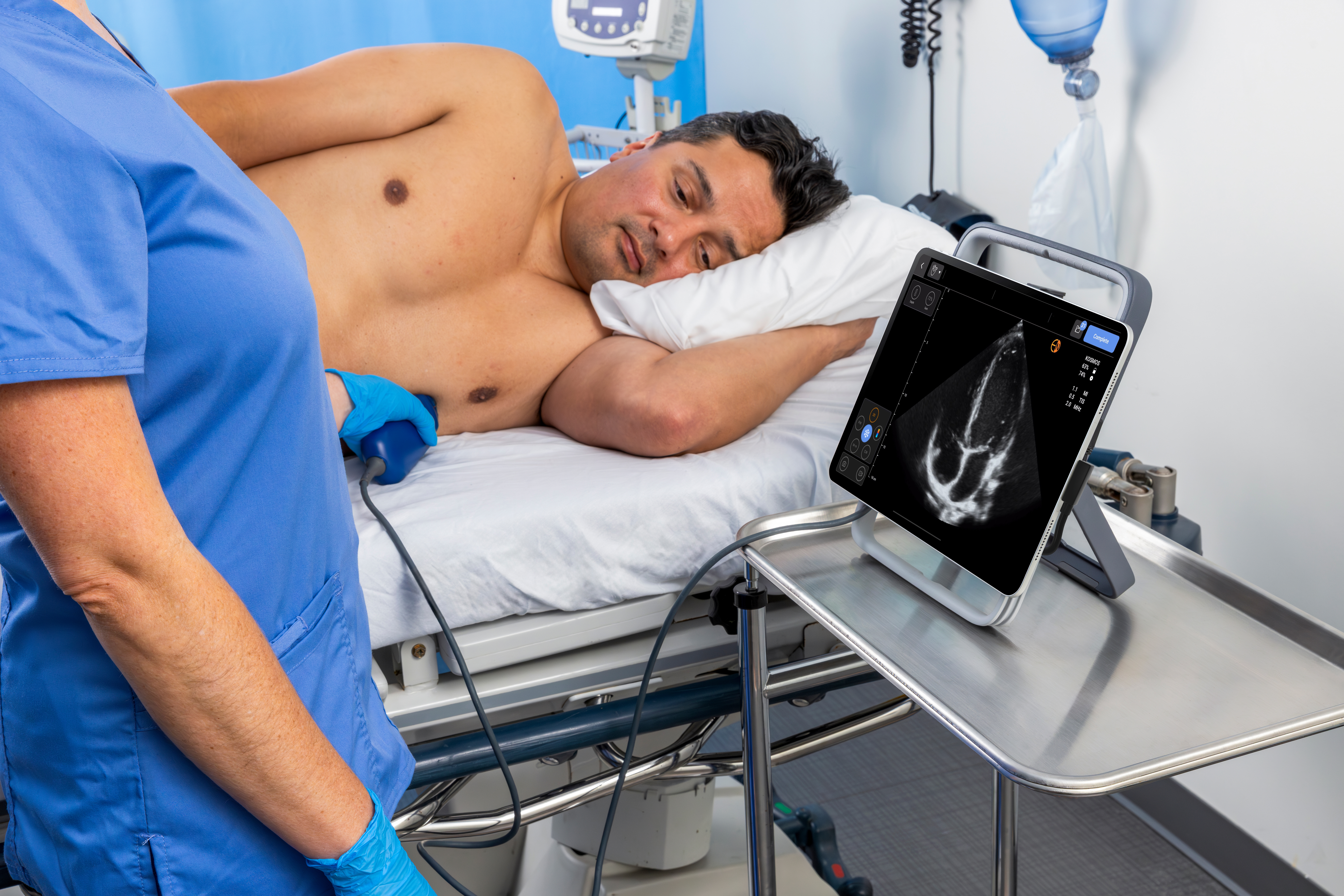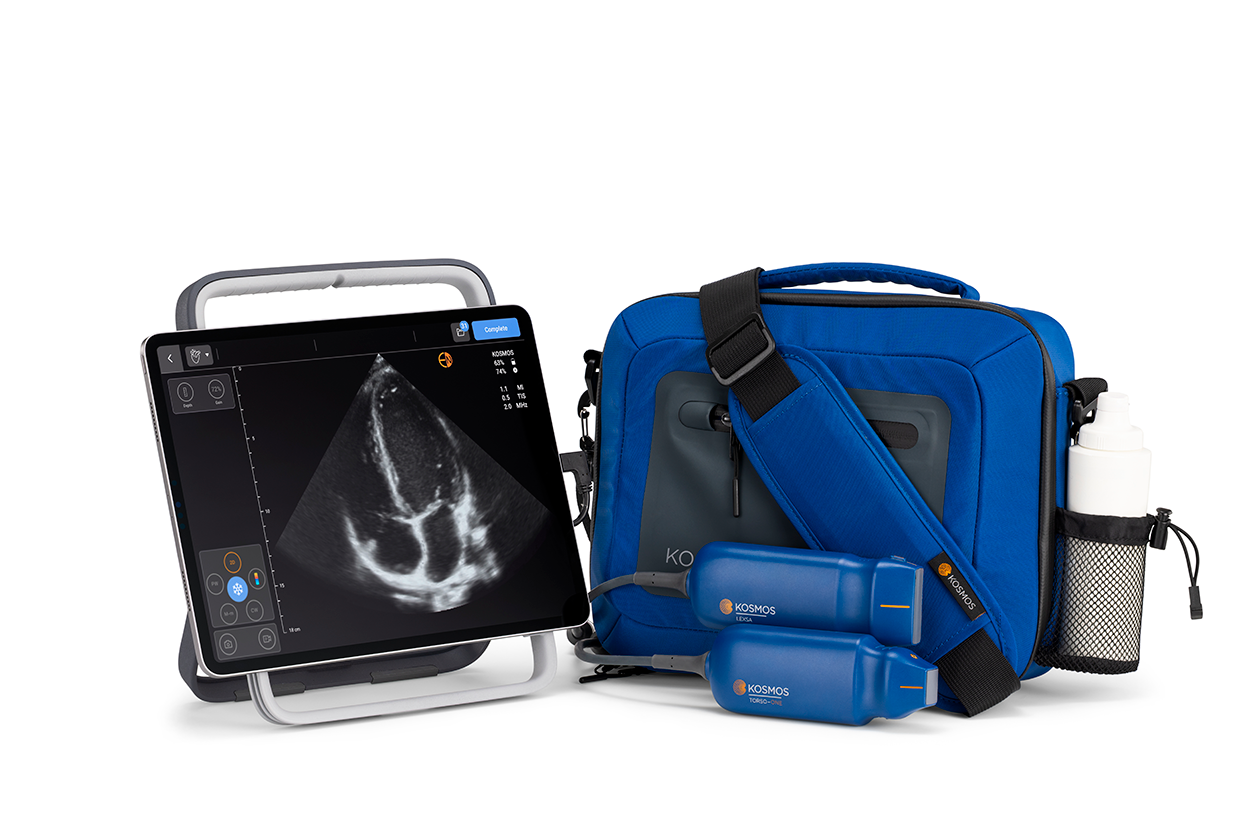Dr. Luna Gargani talks Point-of-Care Ultrasound
The Value of POCUS
Doctors around the world are finding new uses for point-of-care ultrasound every single day. We’re thankful to doctors and medical practitioners that offer their time and talent to better the lives of patients around the world. We’re so proud to help make a difference for patients and practitioners wherever point-of-care is called for. Point-of-Care Ultrasound (POCUS) is a customizable and dynamic tool used by physicians to assess patients’ hearts, lungs, and other organs, with the anticipation that artificial intelligence will revolutionize medical care and POCUS will become a standard part of medical education.
Watch the video above, or read a lightly edited transcript of the interview below. Republished with the permissions of Dr. Luna Gargani. This interview is edited for clarity and readability online.
Dr. Luna Gargani on Point-of-Care Ultrasound:
I actually use Point-of-Care Ultrasound every day. Assessing almost each patient that I have to see, so either outpatients or inpatients when I have to evaluate them. Of course we do a physical examination, we collect the history of the patient, but when it comes to assessing the heart, the function of the heart and the degree of compensation of the patient, I always use ultrasound. Not only to look at the heart, but also, I give a look to the lungs and more recently, sometimes we extend the evaluation to the venous part of the patient.
So actually it’s not doing everything to every patient, but it is choosing what you feel is more appropriate to each patient according to the clinical picture, but it’s part integrated, part of my evaluation in each patient.
The first use of point-of-care ultrasound in general has been with intensivists, because they have to deal with the most critically ill patients and also emergency physicians again because they have critical situations, urgent situations and they have to understand what’s going on with the patient in a very short time.
In the first years of point of care, we started to extend the examination of the heart to the lungs. But now we are going to watch and assess more and more organs. It can be the deep veins, it can be the abdomen, it can be the VExUS with all the veins. The applications are many.
You can assess the eye, the brain, and you don’t have to do everything to every patient. So a multi-organ doesn’t mean that all the organs have to be assessed in all patients. You have to customize your assessment to the clinical scenario, which is the essence of point-of-care.
We have to remember that point-of-care means that it’s something that you do at the point of care, where you have the patient at the bedside. You just have to do what is needed. You don’t have to do everything. And this is strongly clinically indicated and clinically related. This is also why there is a discussion about point-of-care with the radiologist because usually imaging tests have been done by radiologists and are done by radiologists.
But, this is not an imaging test in the common sense of the term, this is a kind of extension. It’s a super extension of the physical examination, so it has to be done by the physician who is in charge of the patient and the physician who knows the patient’s history and the clinical situation because it’s not a standard examination.
It’s something that you customize and tailor to the patient according to what you know and is very dynamic. So you can repeat it and change it and again tailor it according to the clinical changes of your patient. So it’s something that has to be done from who is taking care and deciding the treatment of the patient.
I believe that artificial intelligence is going to revolutionize the way we are caring and dealing with our patients, not only in point-of-care but in many other fields. At the moment we still have very preliminary data, but of course everything is extremely interesting and promising.
I’m quite sure that in a few years, most of our medical activities will be interviewed with artificial intelligence, especially imaging, which can highly benefit from that [AI], of course. We need robust systems and this takes time. I’m quite sure that we have such good technologies and good people to work on them that very soon we are going to highly benefit from the help of artificial intelligence, still not so common in the day by day clinical practice. There is so much work going on that it’s going to happen.
If you have a valid technology in your hand, which can give you an answer that you are looking for to decide what treatment to adopt and start. This will help you in the care of persons and especially you mentioned time which is a crucial point. I have to say that all the studies about point of care ultrasound have demonstrated mostly that what you gain by using point-of-care is time.
There are not so many studies showing that you can improve patients outcomes, especially in patients. But there are very solid data showing that when you use point of care echo, especially for the differential diagnosis of acute dyspnea, acute chest pain, circulatory insufficiency so patients with shock, hypertension, what you gain is time. You arrive at the right diagnosis in a shorter time compared to the standard evaluation.
Many times when, especially when we are dealing with an emergency situation, we don’t record images, we don’t put the name of the patient on the machine and this is wrong for many reasons. It doesn’t take so much time that you cannot afford it. It just takes a few seconds and apart from the legal implications of not having a demonstration of what you have seen, if you have videos, images, you can use all these materials for training for audit to improve your skills, to teach other people.
It is very important and the ability of storing and saving the images is something that can make the difference. Images are so powerful, videos moving videos are even more powerful, and so for education and teaching and training simulations, ultrasound is really key.
For example, even a very simple thing like anatomy, which I mean simple in a way, but it’s rather difficult and hard to study if we would start to teach anatomy as it’s done only in a few places, by the support of ultrasound that would be much easier for students and also for teachers. Miniaturization of the machines has been one of the key points that has spread the use of point-of-care ultrasound, because if you have to use a big bulky machine charged on the wall and the that needs like 3 minutes to be switched on so the complete meaning of point-of-care it’s not there anymore.
So miniaturization is crucial, especially when you’re dealing in difficult situations. So of course, if you are in an intensive care unit and you have even a not so small machine, but you can have it at your hand all the time. It doesn’t really make that difference. But when you are in an ambulatory office or if you have to visit the patient at home or you are in another situation, of course you need a small portable machine and something that at least to me is really important is the time for the switch on. So it must be short. And you don’t need to wait too much time to have access to the machine because it must be similar to what you do with your stethoscope. You don’t have to switch on a stethoscope, you just put it in your ear and use it and it should be the same immediateness with the machine that you have. Well, I don’t know where it’s going. I know what I hope POCUS is going.
I do hope that in a near future point of care, ultrasound will be taught in Medical school at any level. For any doctor and everybody will be able as well as everybody at the end of medical school can do a complete physical examination.
The doctors of the next generation should be able to do multi-organ point-of-care echo that they will adapt to the different scenarios. Actually, I really cannot see any situation in which this cannot be useful because in each specialty. There are some. Clinical situations where point-of-care echo can really help you, so it should be part of the standard medical education of each doctor.



